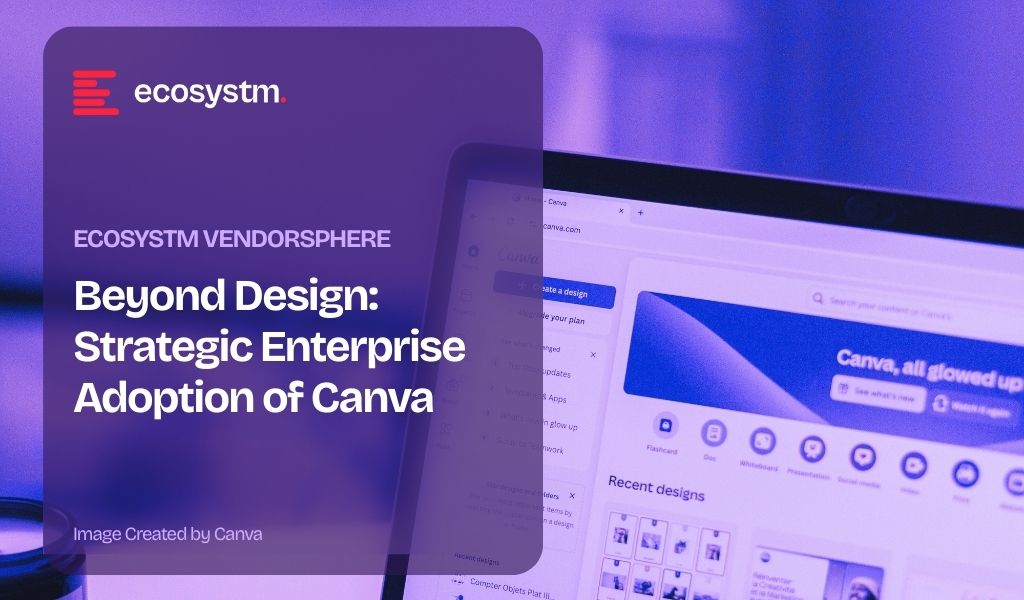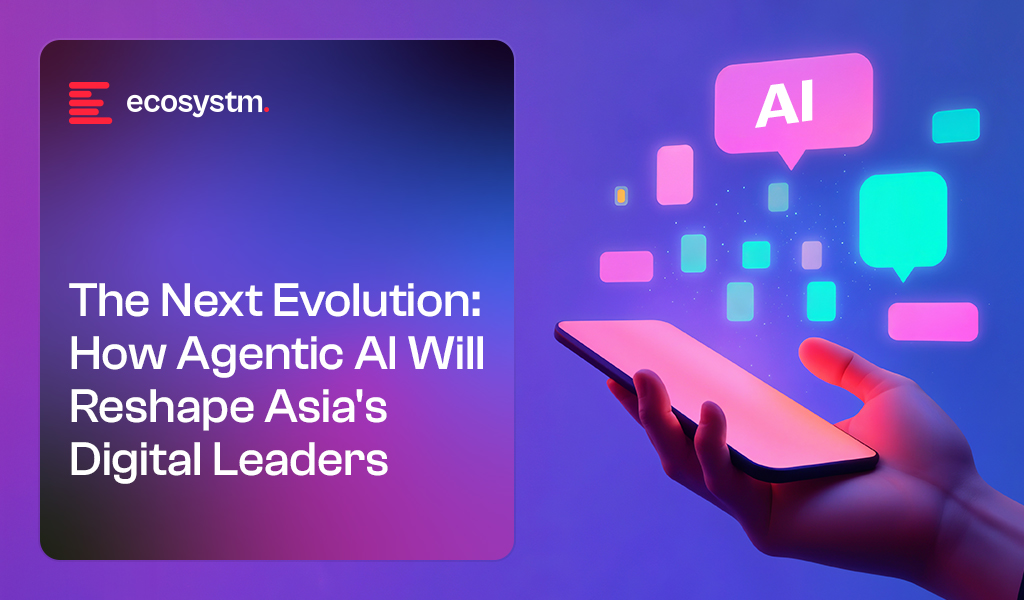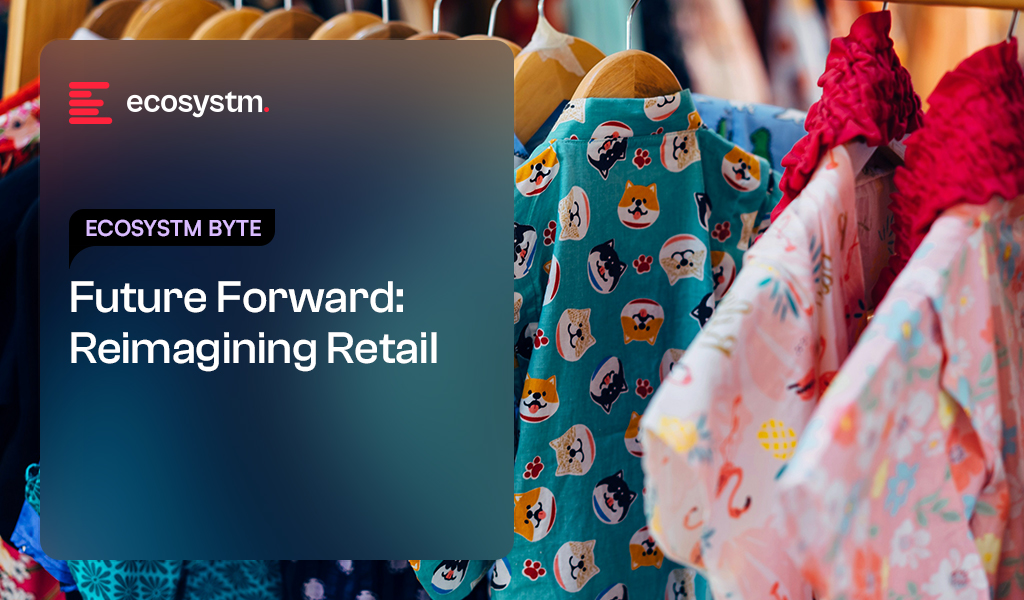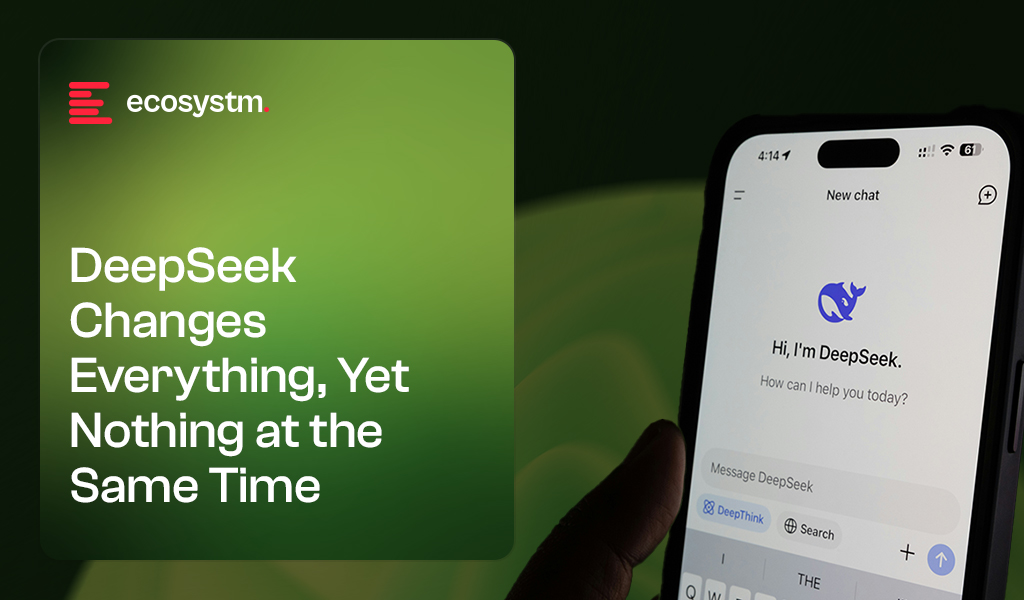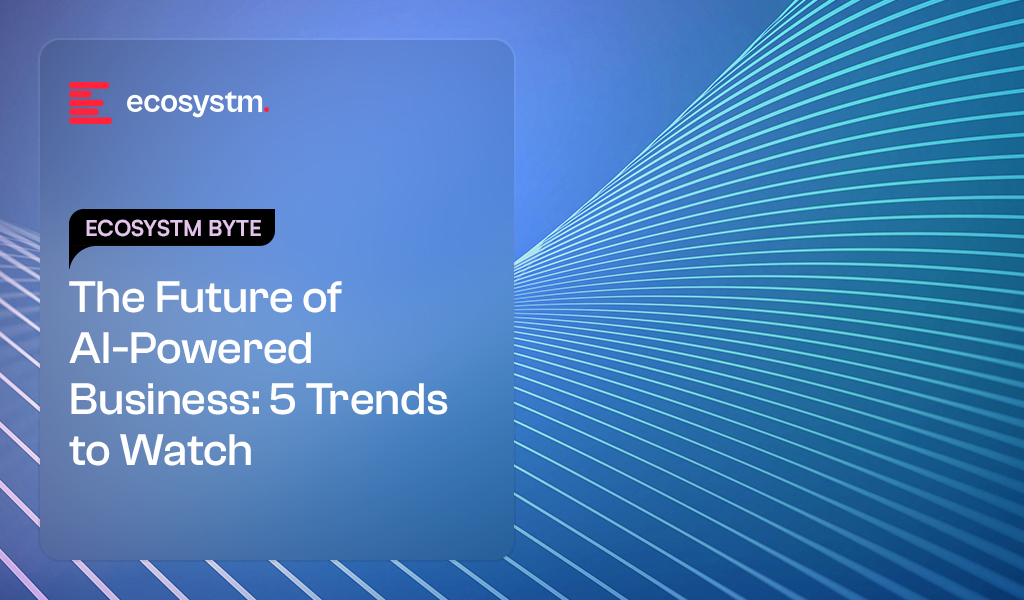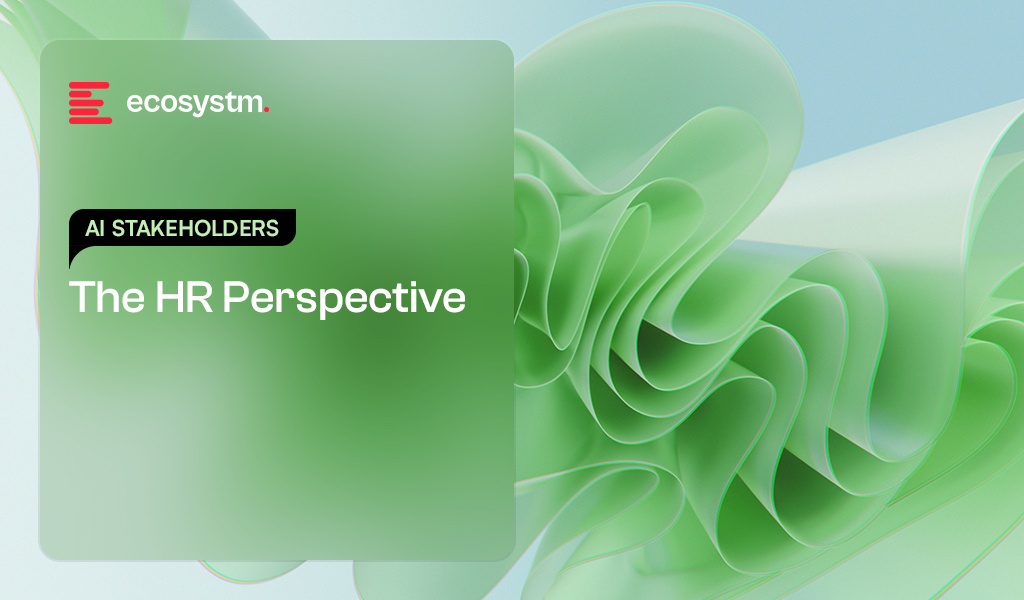Qualtrics, a leading global Voice of Customer (VoC) provider, held its annual X4 conference in May, at the ICC in Sydney. The event included an exclusive media lunch and focused on Qualtrics’ latest announcements and product enhancements, many of which were first unveiled at its US event in March.
The conference combined insights into the company’s technology roadmap with real-world customer success stories, featuring organisations such as KFC, ServiceNow, David Jones, Hilton, and others.
In a world dominated by AI agents, the opportunity lies in building real human connections. The challenge, however, is to do this at scale. Empowering people with AI agents, rather than replacing them, can improve efficiency while also creating space for more empathetic, human-centred interactions, the vendor argues. The theme of building connections and making every connection count came through loud and clear and was weaved through the product announcements.
Here are my key takeaways from attending the conference.
Culture is Key
It was refreshing to see culture take centre stage at a vendor briefing – a critical pillar for CX success that’s too often overlooked in technology conversations.
While technology is critical to enable a successful CX practice and continuously improve customer experience, building a culture of customer centricity must be the foundation for technology to be successful.
It’s critical to break down internal silos to unify data across the organisation and democratise insights. With customer feedback now coming into the organisation through various channels (surveys, calls, emails, social media, etc.), GenAI enables organisations to create a holistic understanding of experiences across all channels and touchpoints. Likewise, that data needs to be shared with the right internal teams to enable continuous improvement opportunities. For that to happen, organisations need to develop a culture of customer centricity and break out of their silo-centric mindset.
Qualtrics Experience Agents
No surprise, Agentic AI has made it into the world of customer feedback with Brad Anderson, President – Products, User Experience, and Engineering, introducing Qualtrics Experience Agents.
Qualtrics has started to develop AI agents and is slowly embedding this capability into the platform. Think about closing the loop with customers, automating small tasks, and proactively identifying issues before we hear about them.
The Experience Agents can respond to customers during the survey process or can be embedded into the digital experience to address problems in real time. Closing the loop with customers, across surveys and other service requests, can be a timely and resource intense undertaking. Qualtrics’ autonomous agents can close the loop with 100% of customers, automatically responding in real time, building empathy and making your customers feel heard.
It’s still early days for Qualtrics’ Experience Agents and I look forward to seeing tangible outcomes of customer implementations. I’m sure we’ll hear more about this over the coming months!
Surveys Just Got Smarter
Qualtrics introduced “agentified” surveys, a new way to respond to verbatim survey feedback, adjust follow up questions accordingly, and turn surveys into conversations.
This is an evolution of what’s referred to as verbatim probing. They represent a new way of getting actionable feedback from customers through AI enabled and adaptive questioning during a survey.
The new technology enhances the insight quality and aims to build empathy with customers. Verbatim responses become richer in value and Qualtrics reports a slight increase in survey completion rates. The aim is to turn surveys into conversations, leaving customers feeling heard and building stronger connections.
Despite the adoption of unsolicited feedback as a source of customer insights, surveys still represent the foundation for any VoC program, and they’re not going to go away any time soon. Enhancing survey capabilities while adding operational and unsolicited feedback to the mix will be key to establishing a deeper understating of customer experience and identifying improvement opportunities.
Show Me the Money
Qualtrics highlights the importance of linking CX initiatives to business outcomes and results to demonstrate ROI and gain buy-in and continued support from key stakeholders.
When VoC programs were first introduced, the main challenge for most organisations was gathering customer feedback. Once that hurdle was overcome – thanks to technology – the next challenge became converting raw data into meaningful insights, especially with the addition of unstructured data sources.
The focus then shifted from insights to identifying and driving action. Mature organisations are now at the stage of tangibly linking CX results to business outcomes and showcasing ROI. Quantifying business impact is an essential step in enabling CX success, yet it is often neglected.
Most organisations are still working on building robust Insights-to-Action frameworks and translating insights into tangible action; efforts often hindered by limited collaboration and a lack of customer-centric culture. For more mature organisations, the challenge now lies in clearly demonstrating the business outcomes and ROI of their CX programs.
Other Announcements
Qualtrics Assist. Alongside other technology giants, Qualtrics’ ‘Assist’ solution is an easy way to query the data in a natural language style, i.e. asking data questions to find insights. This is particularly important for larger data sets that comprise survey and unsolicited feedback, as it significantly speeds up the insight generation process. Analysis that used to take days or weeks, can now be completed in minutes or seconds.
Qualtrics Edge. Qualtrics has started to introduce synthetic data to its Research product suit. It’s a niche market at this stage but certainly growing in popularity as utilising synthetic data, panels and personas not only significantly speeds up the research process but also reduces cost. I’m interested to see market uptake for this. While it’s not new per se, organisations still need to overcome the “trust” hurdle to fully embrace synthetic data and research.
Customer Service and VoC: Boundaries Blur Further
While AI agents have dominated contact centre conversations in recent months, Qualtrics is one of the few VoC vendors now introducing Agentic AI with its Experience Agents.
This is particularly relevant for the digital experience space, where a variety of vendors are offering solutions. Qualtrics’ Experience Agents can detect signs of frustration and rage clicking during digital sessions and proactively engage to close the loop in real time.
It will be interesting to see how the growing number of agents from different vendors ultimately work together in a coordinated way to enhance experiences, rather than introduce new points of friction.
The contact centre has long been a goldmine for customer experience data and insights. Today, tapping into conversational data has become an open field for vendors across VoC, contact centre, and conversational intelligence categories. While this brings innovation, it also complicates decision-making for technology buyers. With vendors from different backgrounds offering overlapping capabilities, often to different internal stakeholders, organisations risk ending up with complex, costly tech stacks.
That said, it’s encouraging to see Qualtrics continue to develop and embed GenAI and Agentic AI into its platform. As a leader in the CX space, it’s setting a high bar for the rest of the market.

In AI’s early days, enterprise leaders asked a straightforward question: “What can this automate?” The focus was on speed, scale, and efficiency and AI delivered. But that question is evolving. Now, the more urgent ask is: “Can this AI understand people?”
This shift – from automation to emotional intelligence – isn’t just theoretical. It’s already transforming how organisations connect with customers, empower employees, and design digital experiences. We’re shifting to a phase of humanised AI – systems that don’t just respond accurately, but intuitively, with sensitivity to mood, tone, and need.
One of the most unexpected, and revealing, AI use cases is therapy. Millions now turn to AI chat tools to manage anxiety, process emotions, and share deeply personal thoughts. What started as fringe behaviour is fast becoming mainstream. This emotional turn isn’t a passing trend; it marks a fundamental shift in how people expect technology to relate to them.
For enterprises, this raises a critical challenge: If customers are beginning to turn to AI for emotional support, what kind of relationship do they expect from it? And what does it take to meet that expectation – not just effectively, but responsibly, and at scale?
The Rise of Chatbot Therapy
Therapy was never meant to be one of AI’s first mass-market emotional use cases; and yet, here we are.
Apps like Wysa, Serena, and Youper have been quietly reshaping the digital mental health landscape for years, offering on-demand support through chatbots. Designed by clinicians, these tools draw on established methods like Cognitive Behavioural Therapy (CBT) and mindfulness to help users manage anxiety, depression, and stress. The conversations are friendly, structured, and often, surprisingly helpful.
But something even more unexpected is happening; people are now using general-purpose AI tools like ChatGPT for therapeutic support, despite them not being designed for it. Increasingly, users are turning to ChatGPT to talk through emotions, navigate relationship issues, or manage daily stress. Reddit threads and social posts describe it being used as a therapist or sounding board. This isn’t Replika or Wysa, but a general AI assistant being shaped into a personal mental health tool purely through user behaviour.
This shift is driven by a few key factors. First, access. Traditional therapy is expensive, hard to schedule, and for many, emotionally intimidating. AI, on the other hand, is always available, listens without judgement, and never gets tired.
Tone plays a big role too. Thanks to advances in reinforcement learning and tone conditioning, models like ChatGPT are trained to respond with calm, non-judgmental empathy. The result feels emotionally safe; a rare and valuable quality for those facing anxiety, isolation, or uncertainty. A recent PLOS study found that not only did participants struggle to tell human therapists apart from ChatGPT, they actually rated the AI responses as more validating and empathetic.
And finally, and perhaps surprisingly, is trust. Unlike wellness apps that push subscriptions or ads, AI chat feels personal and agenda-free. Users feel in control of the interaction – no small thing in a space as vulnerable as mental health.
None of this suggests AI should replace professional care. Risks like dependency, misinformation, or reinforcing harmful patterns are real. But it does send a powerful signal to enterprise leaders: people now expect digital systems to listen, care, and respond with emotional intelligence.
That expectation is changing how organisations design experiences – from how a support bot speaks to customers, to how an internal wellness assistant checks in with employees during a tough week. Humanised AI is no longer a niche feature of digital companions. It’s becoming a UX standard; one that signals care, builds trust, and deepens relationships.
Digital Companionship as a Solution for Support
Ten years ago, talking to your AI meant asking Siri to set a reminder. Today, it might mean sharing your feelings with a digital companion, seeking advice from a therapy chatbot, or even flirting with a virtual persona! This shift from functional assistant to emotional companion marks more than a technological leap. It reflects a deeper transformation in how people relate to machines.
One of the earliest examples of this is Replika, launched in 2017, which lets users create personalised chatbot friends or romantic partners. As GenAI advanced, so did Replika’s capabilities, remembering past conversations, adapting tone, even exchanging voice messages. A Nature study found that 90% of Replika users reported high levels of loneliness compared to the general population, but nearly half said the app gave them a genuine sense of social support.
Replika isn’t alone. In China, Xiaoice (spun off from Microsoft in 2020) has hundreds of millions of users, many of whom chat with it daily for companionship. In elder care, ElliQ, a tabletop robot designed for seniors has shown striking results: a report from New York State’s Office for the Aging cited a 95% drop in loneliness among participants.
Even more freeform platforms like Character.AI, where users converse with AI personas ranging from historical figures to fictional characters, are seeing explosive growth. People are spending hours in conversation – not to get things done, but to feel seen, inspired, or simply less alone.
The Technical Leap: What Has Changed Since the LLM Explosion
The use of LLMs for code editing and content creation is already mainstream in most enterprises but use cases have expanded alongside the capabilities of new models. LLMs now have the capacity to act more human – to carry emotional tone, remember user preferences, and maintain conversational continuity.
Key advances include:
- Memory. Persistent context and long-term recall
- Reinforcement Learning from Human Feedback (RLHF). Empathy and safety by design
- Sentiment and Emotion Recognition. Reading mood from text, voice, and expression
- Role Prompting. Personas using brand-aligned tone and behaviour
- Multimodal Interaction. Combining text, voice, image, gesture, and facial recognition
- Privacy-Sensitive Design. On-device inference, federated learning, and memory controls
Enterprise Implications: Emotionally Intelligent AI in Action
The examples shared might sound fringe or futuristic, but they reveal something real: people are now open to emotional interaction with AI. And that shift is creating ripple effects. If your customer service chatbot feels robotic, it pales in comparison to the AI friend someone chats with on their commute. If your HR wellness bot gives stock responses, it may fall flat next to the AI that helped a user through a panic attack the night before.
The lesson for enterprises isn’t to mimic friendship or romance, but to recognise the rising bar for emotional resonance. People want to feel understood. Increasingly, they expect that even from machines.
For enterprises, this opens new opportunities to tap into both emotional intelligence and public comfort with humanised AI. Emerging use cases include:
- Customer Experience. AI that senses tone, adapts responses, and knows when to escalate
- Brand Voice. Consistent personality and tone embedded in AI interfaces
- Employee Wellness. Assistants that support mental health, coaching, and daily check-ins
- Healthcare & Elder Care. Companions offering emotional and physical support
- CRM & Strategic Communications. Emotion-aware tools that guide relationship building
Ethical Design and Guardrails
Emotional AI brings not just opportunity, but responsibility. As machines become more attuned to human feelings, ethical complexity grows. Enterprises must ensure transparency – users should always know they’re speaking to a machine. Emotional data must be handled with the same care as health data. Empathy should serve the user, not manipulate them. Healthy boundaries and human fallback must be built in, and organisations need to be ready for regulation, especially in sensitive sectors like healthcare, finance, and education.
Emotional intelligence is no longer just a human skill; it’s becoming a core design principle, and soon, a baseline expectation.
Those who build emotionally intelligent AI with integrity can earn trust, loyalty, and genuine connection at scale. But success won’t come from speed or memory alone – it will come from how the experience makes people feel.

GenAI AI has truly transformed content creation by automating text, image, and video generation from simple prompts, slashing the time and skills once needed. Canva leads this shift, blending an intuitive interface with expansive templates and cutting-edge AI tools. This empowers anyone – individuals or businesses – to produce professional-quality visuals with ease, breaking down barriers and making design truly accessible.
Canva’s “Create 2025” event in Los Angeles showcased its evolution from a simple design tool into a full enterprise platform for productivity, content creation, collaboration, and brand management – embedding visual communication across the modern workplace. For tech teams, marketers, and leaders, this shift brings opportunity but also demands careful strategy, integration, and governance to unlock Canva’s full potential in enterprise settings.
Canva Create 2025: Key Announcements
Visual Suite 2.0: A Unified Workspace & Single Design Canvas. Canva unveiled Visual Suite 2.0, a seamless platform combining presentations, documents, whiteboards, spreadsheets, and video editing into one design canvas. This unified workspace helps organisations streamline workflows, eliminate tool fragmentation, and ensure consistent visual communication across teams.
Canva Sheets: Where Data Meets Design. Canva Sheets reimagines the spreadsheet by focusing on visualising data with rich charts, colour-coded cells, smart templates, automation, and AI-powered insights. Designed for teams that share data rather than just analyse it, Sheets empowers every user – including the “data shy” – to become a confident data analyst.
Canva AI: GenAI for the Creative Enterprise. The enhanced Magic Studio integrates AI-driven writing, image editing, template creation, and video animation into one toolset. Features like Magic Write, Magic Design, and Magic Animate enable teams to create branded, engaging content at scale – quickly and cost-effectively – across the entire Canva platform.
Canva Code: Low/No-Code Interactive Content. Canva Code enables users to build interactive content such as calculators, quizzes, websites, apps, and chatbots without complex coding. Combining this with Canva’s design and brand management tools lets teams create on-brand digital experiences and publish them to customers in minutes – transforming everyone into a coder and accelerating customer-facing innovation.
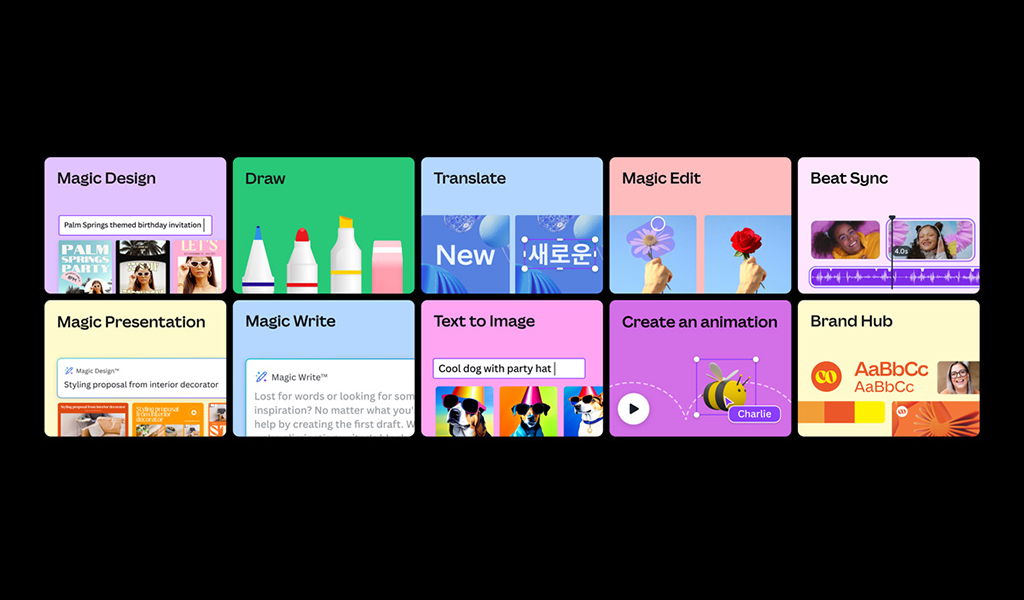
Why Enterprises Should Adopt Canva
Canva’s evolution into an enterprise platform offers several key advantages for larger organisations:
- Streamlined Workflows. A unified workspace and single design canvas cuts the need to switch between tools, boosting efficiency and team collaboration.
- Brand Consistency at Scale. Centralised brand controls and template governance ensure all content – from marketing to regional sales – stays on-brand. For example, eXp Realty’s central design team creates assets that agents nationwide confidently use, maintaining brand integrity.
- Scalable Content Creation. GenAI accelerates content creation and localisation, while Canva Sheets lets designers update assets at scale, reducing days of work to a single click.
- Cross-Functional Collaboration. By making design accessible, Canva empowers marketing, operations, sales, and finance teams to collaborate seamlessly on visuals, cutting bottlenecks.
- Lower Barriers to Creativity. With an easy-to-learn platform, more employees can contribute to visual storytelling without needing design expertise.
Beyond Licensing: Strategic Enterprise Adoption
Successful enterprise adoption of tools such as Canva goes beyond licensing – it requires organisational change. Here’s how enterprises can prepare:
1. Integration with the Digital Workplace Ecosystem
Enterprises must integrate new platforms with the broader toolset employees use daily. Without this, they risk becoming just another siloed app, limiting adoption and ROI.
- Enable SSO and identity management (e.g. via Azure AD or Okta).
- Integrate with storage platforms like SharePoint, Google Drive, or Box.
- Connect to collaboration and productivity tools such as Slack, Teams, Trello, and Salesforce.
2. Structured Training and Enablement
Though intuitive, enterprise features require tailored training to boost adoption and build a self-sustaining user community. Customers benefit from dedicated support – including brand kit setup, onboarding, billing, SSO configuration, and company-wide training with a dedicated Customer Success Manager.
- Deliver role-based training for marketers, HR, sales, and support.
- Establish champions in each business unit to drive adoption.
- Provide regular updates and tips as new features launch.
3. Design Governance and Brand Control
Enterprises must address concerns around brand fragmentation. This ensures that the platform acts as brand enabler – not a brand risk.
- Set up Brand Kits to enforce logos, fonts, and colours.
- Use locked templates for consistency while enabling localisation.
- Create layered permission structures to reflect organisational hierarchy.
4. Data Security, Compliance and Governance
As with any enterprise SaaS platform, security and compliance must be foundational and built into the rollout plan from day one.
- Understand data residency and privacy policies.
- Use admin controls, usage analytics, and audit logs to maintain oversight.
- Define clear policies for external sharing and publishing.
5. Defining Success Metrics
Adoption should be measured by capturing metrics that enable IT and marketing leaders to demonstrate value to the C-suite.
- Benchmark operations before and after rollout.
- Track usage, asset creation, and publishing speed.
- Monitor template use versus freeform content to gauge brand adherence.
- Survey users on productivity improvements and satisfaction.
Driving Adoption and Innovation: The Tech Team’s Mandate
For the success of tools such as Canva in enterprise settings, technology teams must move beyond gatekeeping and become proactive enablers of adoption and innovation. This involves integrating them smoothly with identity management, storage, productivity, and collaboration tools to deliver a seamless user experience. At the same time, they must enforce strict security and access controls, manage user provisioning, and monitor usage to ensure compliance and safeguard sensitive data.
But technology’s role doesn’t stop at governance. Teams need to set clear internal service standards, build strong vendor relationships, and drive consistent rollout across the organisation. Crucially, they should partner with business units to co-develop templates, embed these tools into daily workflows, and experiment with new features like AI-powered design, localisation, and self-service content creation.
Ecosystm Opinion
Canva is no longer just a tool for simple social posts or pitch decks; with its latest updates at Create 2025, it has evolved into a core platform for modern, visual-first enterprise communication. To fully realise this potential, organisations must approach Canva like any other critical enterprise platform – implementing the right structure, strategy, security, and support. For companies aiming to empower teams, speed up content creation, and maintain brand consistency at scale, Canva is now poised to take centre stage.

Asia is undergoing a digital renaissance. Central to this transformation is the rise of digital natives: companies born in the digital era, built on cloud infrastructure, powered by data, and guided by customer-centric agility. Unlike traditional businesses retrofitting technology onto old models, Asia’s digital natives have grown up with mobile-first architecture, software-as-a-service models, and a mindset of continuous iteration. They’re not merely disrupting — they are reshaping economies, industries, and even governance.
But we are seeing a new wave of change. The rise of Agentic AI – autonomous, multi-agent systems that handle workflows, decision-making, and collaboration with minimal human input – is set to redefine industries yet again. For digital natives, embracing Agentic AI is no longer optional. Those who adopt it will unlock unprecedented automation, speed, and scale. Those who don’t risk being leapfrogged by competitors operating faster, smarter, and more efficiently.
The path forward demands evolution and collaboration. Digital natives must upgrade their capabilities, while large tech vendors must shift from selling solutions to co-creating them with these agile players. Together, they can accelerate time-to-market and build future-ready ecosystems.
Reimagining Scale and Customer Experience
Asia’s digital natives have already proven that scale and localisation are not mutually exclusive. Grab, for instance, evolved from a ride-hailing app into Southeast Asia’s super-app by integrating services that reflect local habits, from hawker food delivery in Singapore to motorcycle taxis in Indonesia.
Rather than building physical infrastructure, they leverage platforms and cloud-native tools to reach millions at low marginal cost. AI has been their growth engine, powering hyper-personalisation and real-time responsiveness. Shopee dynamically tailors product recommendations, pricing, and even language options to create user experiences that feel “just for me.”
But with Agentic AI, the bar is rising again. The next leap isn’t just personalisation; it’s orchestration. Autonomous systems will manage entire customer journeys, dynamically adjusting pricing, inventory, and support across markets in real-time. Digital natives that embrace this will set new standards for customer responsiveness and operational scale.
To navigate this leap, co-creating AI solutions with tech partners will be crucial. Joint innovation will enable digital natives to move faster, build proprietary capabilities, and deliver richer customer experiences at scale.
Reshaping Work, Operations, and Organisational Models
Digital natives have long redefined how work gets done, breaking down silos and blending technology with business agility. But Agentic AI accelerates this transformation. Where AI once automated repetitive tasks, it now autonomously manages workflows across sales, legal, HR, and operations.
Tokopedia, for example, uses AI to triage customer queries, detect fraud, and optimise marketplace operations, freeing employees to focus on strategic work. This shift is reshaping productivity itself: traditional KPIs like team size or hours worked are giving way to outcome-driven metrics like resolution speed and value delivered.
With leaner but more impactful teams, digital natives are well-positioned to thrive. But success hinges on evolving workforce models. Upskilling employees to collaborate with AI is no longer optional. Data and AI literacy must be embedded across roles, transforming even non-technical teams into AI-augmented contributors.
This is where partnerships with big tech providers can unlock value. By co-developing workforce models, training frameworks, and governance structures, digital natives and vendors can accelerate AI adoption while keeping humans at the centre.
Unlocking New Ecosystems Through Data and Collaboration
Asia’s digital natives understand that data is more than an asset: it’s a strategic lever for building defensible moats and unlocking new ecosystems. Razorpay processes billions in payment data to assess SME creditworthiness, while LINE integrates messaging, payments, and content to deliver deeply personalised services.
What’s emerging is a shift from vendor-client dynamics to co-innovation partnerships. Flipkart’s collaboration with tech providers to deploy GenAI across customer support, logistics, and e-commerce personalisation is a prime example. By co-developing proprietary AI solutions – from multi-modal search to real-time inventory forecasting – Flipkart is turning its data ecosystem into a competitive advantage.
Agentic AI will only deepen this trend. As autonomous systems handle tasks once outsourced, firms are repatriating operations, creating resilient, data-governed ecosystems closer to consumers. This shift challenges traditional outsourcing models and aligns with Asia’s growing emphasis on data sovereignty and sovereign AI capabilities.
How Agentic AI Will Challenge Digital Natives
Even for Asia’s most agile players, Agentic AI presents new hurdles:
- Loss of Advantage. Without Agentic AI, digital natives risk falling behind as competitors unlock unprecedented automation and optimisation. What was once their competitive edge – speed and agility – could erode rapidly.
- Adaptation Costs. Transitioning to Agentic AI demands serious investment – in infrastructure, talent, and change management. Scaling autonomous systems is complex and resource-intensive.
- Talent Shift. Agentic AI will redefine traditional roles, enhancing employee contributions but also requiring massive upskilling and workflow redesigns. HR, sales, and operations teams must evolve or risk obsolescence.
Navigating these challenges will require digital natives to evolve not just technologically, but organisationally and culturally – and to seek partnerships that accelerate this transformation.
Digital Natives: From Disruptors to Co-Creators of Asia’s Future
Asia’s digital natives are no longer just disruptors; they are architects of the region’s digital economy. But as Agentic AI, data sovereignty, and ecosystem shifts reshape the landscape, they must evolve.
The future belongs to those who co-create. By partnering with large tech vendors, digital natives can accelerate innovation, scale faster, and solve the region’s biggest challenges, from inclusive finance to smart cities and sustainable mobility.

Retail transformation is a continuous, dynamic journey of reinvention – driven by agility, experimentation, and the need to keep pace with ever-evolving consumer behaviour. It’s not a fixed destination but an ongoing process of innovation.
At its heart, retail transformation is about putting the customer squarely in control. It’s the strategic overhaul that allows retailers to truly understand individual desires, offering hyper-personalised journeys that blur the lines between online browsing and in-store discovery.

Click here to download “Future Forward: Reimagining Retail” as a PDF.
Enabling Growth with Smarter Sales and Distribution
India’s Tata Consumer Products, aiming to grow their FMCG market share, set out to digitise sales across the vast ‘kirana’-driven retail network.
The company replaced outdated tools with a system that streamlines distributor onboarding, order management, and retail execution – cutting setup times from days to minutes.
A mobile app gives field reps real-time inventory, auto-applied promos, and personalised KPIs, while dashboards give managers live territory insights. Built in seven months, the platform now handles 6M+ transactions monthly, supports 8,000 reps, 12,000 distributors, and 1.6M outlets. Centralised service and rapid feature rollouts keep Tata Consumer fast, responsive, and customer-focused.
Addressing Legacy Limitations
One of New Zealand’s leading grocery retailer, Foodstuffs South Island, faced growing limitations from aging ERP systems and hardware nearing end-of-life.
Instead of reinvesting in outdated tech, FSSI launched Project Petra – a leap to a unified, cloud-based ERP platform.
The shift enabled intelligent replenishment, robotic automation, and a vastly improved user experience. In 18 months, FSSI streamlined roles, rebuilt core apps, and completed a smooth go-live in just three days. The payoff: forecasting and replenishment times cut by up to 50%, faster transactions, seamless price updates, and real-time insights. What began as a tech upgrade became a full transformation – boosting agility, empowering teams, and fuelling future-ready growth.
Streamlining Workflows, Empowering Employees
UCC Group, the Japanese coffee pioneer, is brewing a transformation internally. With 88 locations across 21 countries, UCC faced mounting inefficiencies from outdated legacy systems – slow, complex workflows and clunky portals that frustrated employees and slowed approvals.
UCC replaced their legacy systems with a cloud-first, mobile-first platform.
VPNs were eliminated. Approvals that once took multiple logins now take one tap. A clean, co-designed portal replaced the old interface, putting ease of use first. E-signatures and digitised requests cut paper use by 90% – over 1.5 million forms saved. A new life-event portal launched in just one month, proving speed and simplicity can coexist. Now expanding globally, UCC is unifying ERP, data, and apps into a single, employee-first hub – built for scale, speed, and the future.
Scaling Customer Experience at Speed
Aditya Birla Fashion Retail Limited (ABFRL) faced the challenge of scaling their multi-brand presence without compromising customer experience. As growth surged across stores, online platforms, and marketplaces, their order management system struggled to keep up – putting fulfillment speed, accuracy, and satisfaction at risk.
To solve this, ABFRL implemented a scalable, multi-instance order management solution that streamlined inventory tracking, fulfillment, and refunds.
The result: 99.5% faster inventory sync, zero refund failures, smarter order decisions, and accurate delivery estimates across all channels. This strategic overhaul helped ABFRL maintain service excellence while fuelling sustainable growth – proving that operational agility is key to scaling customer experience at speed.
Solving Reliability & Scalability Challenges
Chicks Lifestyle is a trusted home-grown brand in Hong Kong known for quality innerwear and thermal wear. As they expanded online and geared up for sustainable growth, outdated on-prem systems began to strain under peak-season pressure – causing crashes, long checkout lines, and customer frustration.
To fix this, they migrated their core ERP and POS systems to the cloud in just six weeks with zero data loss.
The result: 99.99% uptime, 30% jump in efficiency, 15% faster checkouts, and 40% lower IT costs. Loyalty data access dropped from minutes to seconds, enabling personalised service at scale. With a stable, scalable tech backbone in place, Chicks Lifestyle is now exploring AI to power their next phase of innovation.

“SaaS is dead!” – this paraphrased comment from Satya Nadella during an interview was taken wildly out of context. It reminded me of those 2014-2017 industry reports predicting that voice commerce would be a USD 500B market by 2025, or that self-driving cars would be everywhere by 2027 – just two years from now. As it turns out, people still prefer ordering groceries themselves rather than relying on smart speakers connected to IoT fridges. And those early chatbot pop-ups? More annoying than intelligent. As for autonomous cars, we might still be better drivers – though that’s starting to shift. But I digress.
Back to SaaS. A global industry with over 30,000 companies, mostly in the US, now finds itself under the shadow of the latest buzz: AI agents (still software, not humanoid robots). These agents – programs built on top of LLMs – take actions within set parameters, showing a degree of autonomy.
But to make AI agents enterprise-ready, we’ll need to rethink access control, ethics, authentication, and compliance. So far, they’ve mostly tackled low-value, repetitive tasks. And despite the hype, we’re still some distance from real, meaningful impact.
Predictions Are Fine – But Best Taken with a Pinch of Salt
Salesforce, the world’s largest SaaS company, has played its part in driving this shift — alongside, of course, Microsoft. Microsoft’s aggressive push into AI, with a massive USD 80 billion CapEx on AI data centres and a flurry of product launches like Copilot chat, may just be the beginning. Microsoft even describes Copilot as the “UI for AI.” Despite its size, Salesforce has moved quickly, rolling out Agentforce, its enterprise AI agent suite. While still early days, Salesforce is leveraging its formidable sales and marketing muscle to push the AI agent narrative — while upselling Agentforce to thousands of existing customers.
For context: Salesforce, the largest player, generates around USD 35 billion in annual revenue. Across the industry, there are roughly 300 SaaS unicorns – but even combined, the entire global SaaS sector brings in only about USD 300B a year. Beyond big names like Salesforce, HubSpot, and Atlassian, the market is dominated by a long tail of smaller, vertical SaaS firms that serve niche sub-industries and specialised use cases.
Today, about 70% of enterprise software is delivered through SaaS. But beyond the top 30 vendors, the landscape is highly fragmented — and arguably primed for disruption by AI agents that can automate and streamline more bespoke, industry-specific workflows.
But the thousands of smaller SaaS firms haven’t all moved as quickly as Salesforce has. Most will likely stick to announcements and incremental upgrades rather than radical deployments – especially as enterprises tread carefully while every vendor suddenly becomes “AI-inside”, the new “Intel-inside.”
AI Washing, Hype, and a Flood of Start-Ups
Since ChatGPT’s historic launch in late 2022, the GenAI AI hype curve hasn’t slowed. In SaaS, the early impact has largely been “AI washing”: companies hastily sprinkling “Generative AI” across their websites, collateral, and social feeds while snapping up .ai domains at premium prices.
Meanwhile, over 3,000 AI-first start-ups have emerged, building wrappers around foundational models to deliver bespoke inferences and niche services. Thanks to ongoing hype, some of these are flush with venture capital – even without revenue. At the same time, traditional SaaS firms face tough investor scrutiny over profitability and free cash flow. The contrast couldn’t be starker.
Yet, both the AI upstarts and the older SaaS players face similar go-to-market challenges. Early product-market fit (PMF) is no guarantee of real traction, especially as most enterprise clients are still experimenting, rather than committing, to AI agents. That’s prompting start-ups to build agentic layers atop inference services to bridge the gap.
The Real Race: Embedding AI with Real Impact
It’s too early to call winners. Whether it’s cloud-first SaaS firms evolving into “AI-inside” platforms, or AI agent start-ups challenging the status quo, success will hinge on more than just AI. It will come down to who can combine proprietary data, compelling use cases, and proven workflow impact.
McKinsey sees AI agents serving two broad patterns: the “factory” model for predictable, routine tasks, and the “artisan” model for augmenting more strategic, executive functions. Another compelling narrative does not make the distinction between the earlier crop of cloud-first and the recent crop of AI-first companies. They see this as a natural progression of the SaaS business model, with VSaaS or “vertical Saas with AI-inside” becoming the broader industry.
I’d argue the original cloud-first SaaS firms might actually be better positioned. Their biggest moat? Existing customer relationships. AI start-ups haven’t yet faced the reality of renewing their first multi-year enterprise contracts. That’s where theory meets enterprise buying behaviour – and where this battle will get interesting.
The Playbook for SaaS Winners in the Age of AI Agents
The SaaS companies that will thrive over the next few years will, in my view, focus on these key elements:
- Leverage Early Clients as a Moat. Invest in the success of your first enterprise clients, ensuring they extract real, sustainable value before chasing new logos. Build enough trust, and you could co-create AI agents trained on their proprietary data, enhancing your core product in the process. Snowflake, with its broad enterprise footprint, has a head start here, but start-ups like Collectivei and Beam are targeting similar use cases, while platforms like Letta help companies deploy their own agents.
- Codify the Use Case. Build products that go deep – not broad. Focus on specific use cases or verticals that a horizontal SaaS company is unlikely to prioritise. Eventually, most enterprise users will care less about which foundation model powers your tool and more about the outcomes.
- Operate with a GTM-First Mindset. Many SaaS firms struggle with margins because of high sales and marketing costs, often wavering between sales-led and product-led growth without a clear go-to-market (GTM) plan. AI start-ups, too, are learning that pure product-led growth doesn’t scale in crowded markets and often pivot to sales-led motions too late. Companies like Chargeflow show why a GTM-first approach is key to building real traction and a growth flywheel.
- Rethink Bundling. Bundling has long been a SaaS pricing play – slicing features into tiers. AI-first start-ups are poised to disrupt this. The shift will be towards outcome-based pricing rather than packaging features. Winners will iterate constantly, tuning bundles to different user cohorts and business goals.
- Charge for Success, Not Seats. AI’s biggest impact may be on pricing. Traditional seat-based models will give way to success or outcome-based pricing, with minimal or no set-up fees. Professional services for customisation will still have value, especially where products align deeply with client workflows and outcomes.
- Prioritise Renewal Over Acquisition. Many AI-first start-ups focus on acquiring logos but underestimate that enterprises are still experimenting – switching costs are low, and loyalty is thin. Building for retention, renewal, and upselling will separate winners from the rest. Focus on churn early.
The Next Chapter in Enterprise Automation
Automation has always been a continuum. Remember when cloud vs. on-prem dominated enterprise debates? Or when RPA was expected to replace most workflows as we knew them? The reality was more measured, and we’re seeing a similar pattern with AI today. Enterprises will first focus on making AI co-pilots work safely, reliably, and effectively before they’re ready to hand over the keys to AI agents running workflows on autopilot. This shift won’t happen overnight.
We’re already seeing early winners capable of negotiating this shift, on both sides: established SaaS giants adapting and AI-native start-ups rising. But make no mistake, this will be a long, hard-fought race. Sustained value capture will demand more than just better tech; it will require a fundamental shift in mindset, go-to-market strategies, and sales motions.
Don’t be surprised if the acronym flips along the way – with Software-as-a-Service giving way to Service-as-Software, as AI agents begin to run entire business processes end to end.
Through it all, one principle will remain timeless: an obsession with customer success – whether the agent is human or machine.
A lot has been written and spoken about DeepSeek since the release of their R1 model in January. Soon after, Alibaba, Mistral AI, and Ai2 released their own updated models, and we have seen Manus AI being touted as the next big thing to follow.
DeepSeek’s lower-cost approach to creating its model – using reinforcement learning, the mixture-of-experts architecture, multi-token prediction, group relative policy optimisation, and other innovations – has driven down the cost of LLM development. These methods are likely to be adopted by other models and are already being used today.
While the cost of AI is a challenge, it’s not the biggest for most organisations. In fact, few GenAI initiatives fail solely due to cost.
The reality is that many hurdles still stand in the way of organisations’ GenAI initiatives, which need to be addressed before even considering the business case – and the cost – of the GenAI model.
Real Barriers to GenAI
• Data. The lifeblood of any AI model is the data it’s fed. Clean, well-managed data yields great results, while dirty, incomplete data leads to poor outcomes. Even with RAG, the quality of input data dictates the quality of results. Many organisations I work with are still discovering what data they have – let alone cleaning and classifying it. Only a handful in Australia can confidently say their data is fully managed, governed, and AI-ready. This doesn’t mean GenAI initiatives must wait for perfect data, but it does explain why Agentic AI is set to boom – focusing on single applications and defined datasets.
• Infrastructure. Not every business can or will move data to the public cloud – many still require on-premises infrastructure optimised for AI. Some companies are building their own environments, but this often adds significant complexity. To address this, system manufacturers are offering easy-to-manage, pre-built private cloud AI solutions that reduce the effort of in-house AI infrastructure development. However, adoption will take time, and some solutions will need to be scaled down in cost and capacity to be viable for smaller enterprises in Asia Pacific.
• Process Change. AI algorithms are designed to improve business outcomes – whether by increasing profitability, reducing customer churn, streamlining processes, cutting costs, or enhancing insights. However, once an algorithm is implemented, changes will be required. These can range from minor contact centre adjustments to major warehouse overhauls. Change is challenging – especially when pre-coded ERP or CRM processes need modification, which can take years. Companies like ServiceNow and SS&C Blue Prism are simplifying AI-driven process changes, but these updates still require documentation and training.
• AI Skills. While IT teams are actively upskilling in data, analytics, development, security, and governance, AI opportunities are often identified by business units outside of IT. Organisations must improve their “AI Quotient” – a core understanding of AI’s benefits, opportunities, and best applications. Broad upskilling across leadership and the wider business will accelerate AI adoption and increase the success rate of AI pilots, ensuring the right people guide investments from the start.
• AI Governance. Trust is the key to long-term AI adoption and success. Being able to use AI to do the “right things” for customers, employees, and the organisation will ultimately drive the success of GenAI initiatives. Many AI pilots fail due to user distrust – whether in the quality of the initial data or in AI-driven outcomes they perceive as unethical for certain stakeholders. For example, an AI model that pushes customers toward higher-priced products or services, regardless of their actual needs, may yield short-term financial gains but will ultimately lose to ethical competitors who prioritise customer trust and satisfaction. Some AI providers, like IBM and Microsoft, are prioritising AI ethics by offering tools and platforms that embed ethical principles into AI operations, ensuring long-term success for customers who adopt responsible AI practices.
GenAI and Agentic AI initiatives are far from becoming standard business practice. Given the current economic and political uncertainty, many organisations will limit unbudgeted spending until markets stabilise. However, technology and business leaders should proactively address the key barriers slowing AI adoption within their organisations. As more AI platforms adopt the innovations that helped DeepSeek reduce model development costs, the economic hurdles to GenAI will become easier to overcome.

The Asia Pacific region is rapidly emerging as a global economic powerhouse, with AI playing a key role in driving this growth. The AI market in the region is projected to reach USD 244B by 2025, and organisations must adapt and scale AI effectively to thrive. The question is no longer whether to adopt AI, but how to do so responsibly and effectively for long-term success.
The APAC AI Outlook 2025 highlights how Asia Pacific enterprises are moving beyond experimentation to maximise the impact of their AI investments.
Here are 5 key trends that will impact the AI landscape in 2025.
Click here to download “The Future of AI-Powered Business: 5 Trends to Watch” as a PDF.
1. Strategic AI Deployment
AI is no longer a buzzword, but Asia Pacific’s transformation engine. It’s reshaping industries and fuelling growth. Initially, high costs and complex ROI pushed leaders toward quick wins. Now, the game has changed. As AI adoption matures, the focus is shifting from short-term gains to long-term, innovation-driven strategies.
GenAI is is at the heart of this shift, moving beyond the periphery to power core business functions and deliver competitive advantage.
Organisations are rethinking AI investments, looking beyond pure financials to consider the impact on jobs, governance, and data readiness. The AI journey is about balancing ambition with practicality.
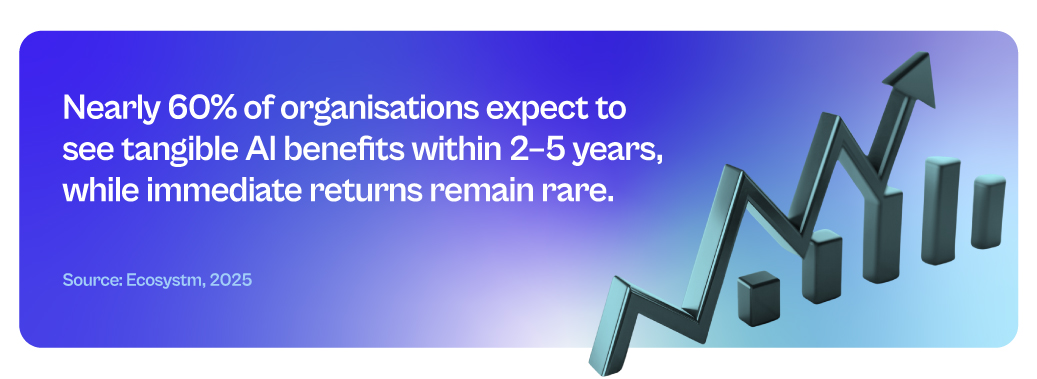
2. Optimising AI: Tailored Open-Source Models
Smaller, open-source, and specialised AI models will gain momentum as organisations seek efficiency, flexibility, and sustainability in their AI strategies.
Unlike LLMs, which require high computational power, smaller, task-specific models offer comparable performance while being more resource-efficient. This makes them ideal for organisations working with proprietary data or limited computational resources.
Beyond cost and performance, these models are more energy-efficient, addressing growing concerns about AI’s environmental impact.

3. Centralised Tools for Responsible Innovation
Navigating the increasingly complex AI landscape demands unified management and governance. Organisations will prioritise centralised frameworks to tame the chaos of diverse AI solutions, ensuring compliance (think EU AI Act) while boosting transparency and security.
Automated AI lifecycle management tools will streamline oversight, providing real-time tracking of model performance, usage, and issues like drift.
By using flexible developer toolkits and vendor-agnostic strategies, organisations can accelerate innovation while maintaining adaptability, as the technology evolves.
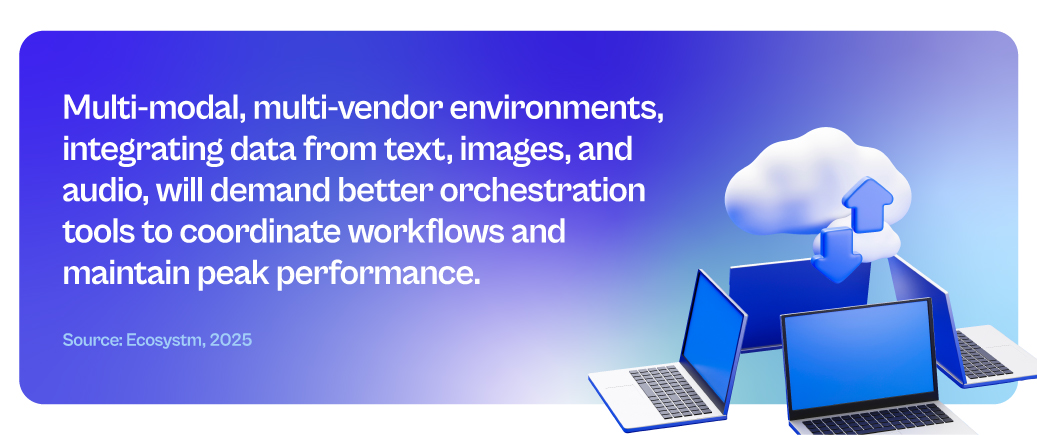
4. Supercharging Workflows With Agentic AI
Organisations will embrace Agentic AI to automate complex workflows and drive business value. Traditional automation tools struggle with real-world dynamism, but AI-powered agents offer a flexible solution. They empower autonomous task execution, intelligent decision-making, and adaptability to changing circumstances.
These agents, often using GenAI, understand complex instructions and learn from experience. They collaborate with humans, boosting efficiency, and adapt to disruptions, unlike rigid traditional automation.
Agentic workflows are key to redefining work, enabling agility and innovation.
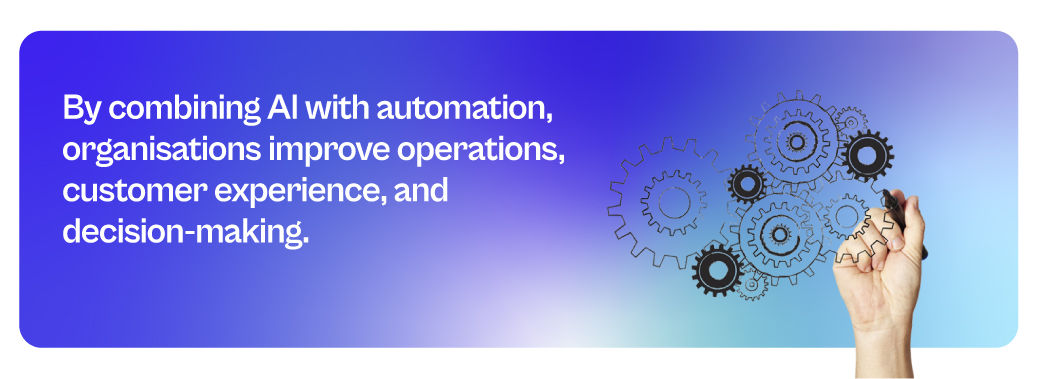
5. From Productivity to People
The focus of AI conversations will shift from simply boosting productivity to using AI for human-centric innovation that transforms both employee roles and customer experiences.
For employees, AI will handle routine tasks, enabling them to focus on creativity and innovation. Education and training will be crucial for a smooth transition to AI-powered workflows.
For customers, AI is evolving to offer more empathetic, personalised interactions by understanding individual emotions, motivations, and preferences. Organisations are recognising the need for transparent, explainable AI to build trust, tailor solutions, and deepen engagement.

Hit or miss AI experiments have leaders demanding results. In this breakneck AI landscape, strategy and realism are your survival tools. A pragmatic approach? High-impact, achievable goals. Know your capabilities, prioritise manageable projects, and stay flexible. The AI winners will be those who champion human-AI collaboration, bake in ethics, and never stop researching.

AI has broken free from the IT department. It’s no longer a futuristic concept but a present-day reality transforming every facet of business. Departments across the enterprise are now empowered to harness AI directly, fuelling innovation and efficiency without waiting for IT’s stamp of approval. The result? A more agile, data-driven organisation where AI unlocks value and drives competitive advantage.
Ecosystm’s research over the past two years, including surveys and in-depth conversations with business and technology leaders, confirms this trend: AI is the dominant theme. And while the potential is clear, the journey is just beginning.
Here are key AI insights for HR Leaders from our research.
Click here to download “AI Stakeholders: The HR Perspective” as a PDF.
HR: Leading the Charge (or Should Be)
Our research reveals a fascinating dynamic in HR. While 54% of HR leaders currently use AI for recruitment (scanning resumes, etc.), their vision extends far beyond. A striking majority plan to expand AI’s reach into crucial areas: 74% for workforce planning, 68% for talent development and training, and 62% for streamlining employee onboarding.
The impact is tangible, with organisations already seeing significant benefits. GenAI has streamlined presentation creation for bank employees, allowing them to focus on content rather than formatting and improving efficiency. Integrating GenAI into knowledge bases has simplified access to internal information, making it quicker and easier for employees to find answers. AI-driven recruitment screening is accelerating hiring in the insurance sector by analysing resumes and applications to identify top candidates efficiently. Meanwhile, AI-powered workforce management systems are transforming field worker management by optimising job assignments, enabling real-time tracking, and ensuring quick responses to changes.
The Roadblocks and the Opportunity
Despite this promising outlook, HR leaders face significant hurdles. Limited exploration of use cases, the absence of a unified organisational AI strategy, and ethical concerns are among the key barriers to wider AI deployments.
Perhaps most concerning is the limited role HR plays in shaping AI strategy. While 57% of tech and business leaders cite increased productivity as the main driver for AI investments, HR’s influence is surprisingly weak. Only 20% of HR leaders define AI use cases, manage implementation, or are involved in governance and ownership. A mere 8% primarily manage AI solutions.
This disconnect represents a massive opportunity.
2025 and Beyond: A Call to Action for HR
Despite these challenges, our research indicates HR leaders are prioritising AI for 2025. Increased productivity is the top expected outcome, while three in ten will focus on identifying better HR use cases as part of a broader data-centric approach.
The message is clear: HR needs to step up and claim its seat at the AI table. By proactively defining use cases, championing ethical considerations, and collaborating closely with tech teams, HR can transform itself into a strategic driver of AI adoption, unlocking the full potential of this transformative technology for the entire organisation. The future of HR is intelligent, and it’s time for HR leaders to embrace it.





